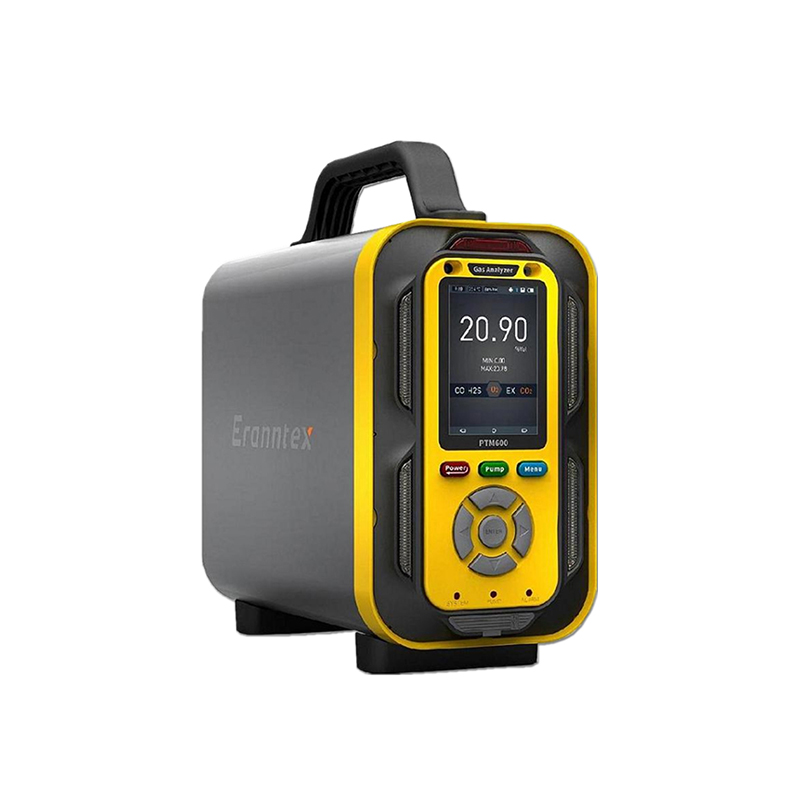- English
- Español
- Português
- русский
- Français
- 日本語
- Deutsch
- tiếng Việt
- Italiano
- Nederlands
- ภาษาไทย
- Polski
- 한국어
- Svenska
- magyar
- Malay
- বাংলা ভাষার
- Dansk
- Suomi
- हिन्दी
- Pilipino
- Türkçe
- Gaeilge
- العربية
- Indonesia
- Norsk
- تمل
- český
- ελληνικά
- український
- Javanese
- فارسی
- தமிழ்
- తెలుగు
- नेपाली
- Burmese
- български
- ລາວ
- Latine
- Қазақша
- Euskal
- Azərbaycan
- Slovenský jazyk
- Македонски
- Lietuvos
- Eesti Keel
- Română
- Slovenski
- मराठी
- Srpski језик
Is It Safe to Use a Handheld Oxygen Analyzer in Explosion-Proof Environments? What Precautions Should Be Taken?
2025-09-19
Safety monitoring of explosion-proof environments is crucial in fields such as petrochemicals and mining. Oxygen concentration, as a key monitoring indicator, is often monitored using a handheld oxygen analyzer. However, explosion-proof environments present a particular risk of combustible materials mixing with air to form explosive mixtures. As live detection equipment, the safety of handheld oxygen analyzers has always been a core concern for users. Therefore, clarifying whether handheld oxygen analyzers can be used in explosion-proof environments and how to use them safely is crucial for safeguarding testing work and personnel safety in explosion-proof environments. Let's explore this with our Zetron Technology editors!

I. Special Risks in Explosion-Proof Environments and Prerequisites for Equipment Use
What precautions should be taken when using the equipment? The unique characteristics of explosion-proof environments lie in the potential presence of flammable gases, vapors, and dust. When these substances mix with air at certain ratios, they can cause an explosion if ignited by a source such as a fire or high-temperature spark. During operation, internal circuit components of a handheld oxygen analyzer generate heat, and some parts may even produce sparks. If the device is not specifically explosion-proof, these potential ignition sources could trigger safety risks in explosion-proof environments. Therefore, not all handheld oxygen analyzers are suitable for direct use in explosion-proof environments; a comprehensive assessment must be made based on the device's characteristics and environmental requirements.
II. The Key Role of the Device's Explosion-Proof Design
Handheld oxygen analyzers that meet explosion-proof environment requirements will incorporate specialized explosion-proof designs in several key areas:
1. The housing will be constructed of materials and structures that can withstand potential internal explosion pressures and prevent flames from propagating outward, preventing the explosion energy from dissipating to the external environment.
2. The circuit design will utilize current and voltage limiting techniques to reduce the likelihood of sparks. Component operating temperatures will also be controlled to prevent high temperatures from becoming ignition sources. Interfaces and gaps will be strictly sealed to prevent external flammable materials from entering the device and coming into contact with the circuitry.
3. In addition, this type of equipment must be explosion-proof certified by a professional organization and pass a series of tests simulating explosion-proof environments to prove its safety in the appropriate scenarios. Equipment without this certification cannot be used in explosion-proof environments, even if it looks similar to an explosion-proof model.
III. Key Points for Standardized Operation in Explosion-Proof Environments
Even if a handheld oxygen analyzer has an explosion-proof design and certification, standard operating procedures must still be followed when used in explosion-proof environments. Before use, carefully inspect the device's explosion-proof components for damage, such as cracks in the outer casing and proper sealing of interfaces. Damage to explosion-proof components may render the device's explosion-proof performance ineffective.
Also, ensure that the device's explosion-proof rating matches the level of danger in the environment. Different explosion-proof environments require different levels of equipment, and equipment with an insufficient rating may not meet safety requirements. During use, avoid violent impact or dropping the device to prevent damage to the explosion-proof structure. Also, pay attention to the device's operating temperature range. Exceeding the specified range may not only affect detection accuracy but also degrade explosion-proof performance.
IV. Equipment Maintenance and Care Requirements
Handheld oxygen analyzers used in explosion-proof environments for extended periods require regular explosion-proof performance inspections to ensure all explosion-proof components are in proper working order. Any equipment malfunction must be handled by qualified personnel with explosion-proof equipment repair qualifications. Self-disassembly or repairs are strictly prohibited, as improper operation may damage the equipment's explosion-proof structure and render it ineffective.
Store the equipment in a dry and well-ventilated environment to prevent moisture or corrosive substances from affecting the equipment's explosion-proof components and circuitry, ensuring long-term, stable explosion-proof performance.
V. Practical Examples of Explosion-Proof Capabilities
Zetron Technology's handheld oxygen analyzers comply with relevant explosion-proof specifications. The housing is constructed of impact-resistant, explosion-proof materials, capable of withstanding external pressure and shock to a certain extent while preventing the spread of any internal fire. The circuitry has been optimized to minimize sparking and heat generation, and the sealed interface design effectively isolates the device from external flammable materials. All devices have received explosion-proof certification from professional organizations and are compatible with some common explosion-proof environments. In explosion-proof environments such as the petrochemical industry, they can provide safe oxygen concentration monitoring under standardized operating procedures. Maintenance requirements are similar to those of conventional explosion-proof handheld oxygen analyzers, and regular inspection of explosion-proof components can maintain stable explosion-proof performance.
In summary, the suitability of a handheld oxygen analyzer for use in explosion-proof environments hinges on its compliance with explosion-proof design and certification, as well as adherence to standardized operating and maintenance requirements. Only by meeting these requirements can a handheld oxygen analyzer accurately measure oxygen concentration in explosion-proof environments while ensuring safety, providing reliable data support for safe operation in explosion-proof environments and preventing accidents caused by improper use of the device.







